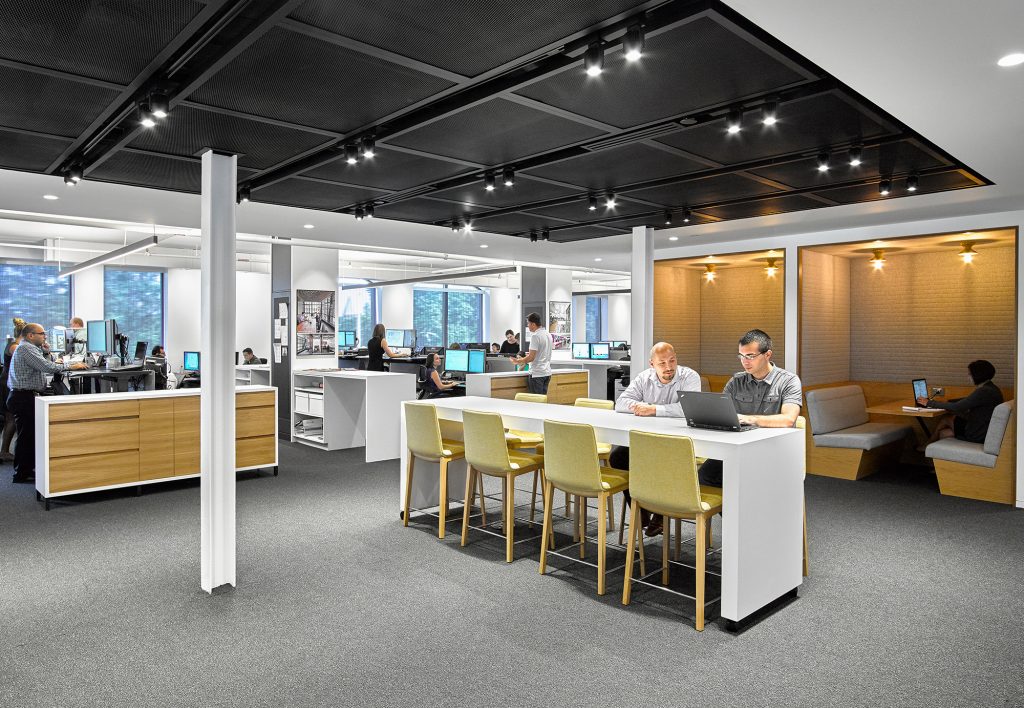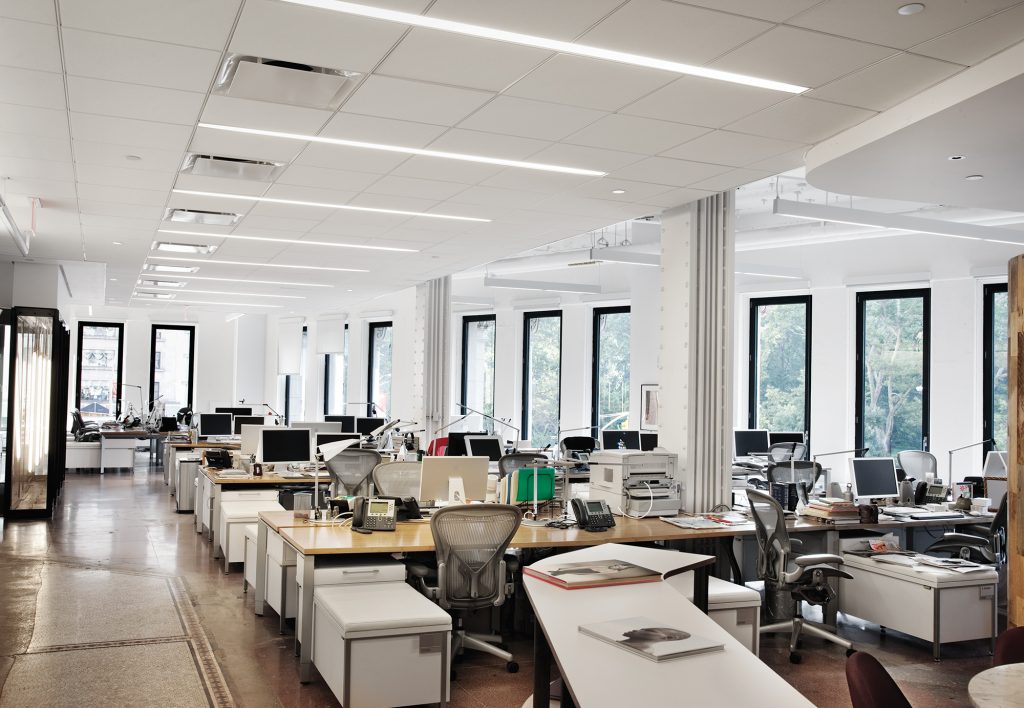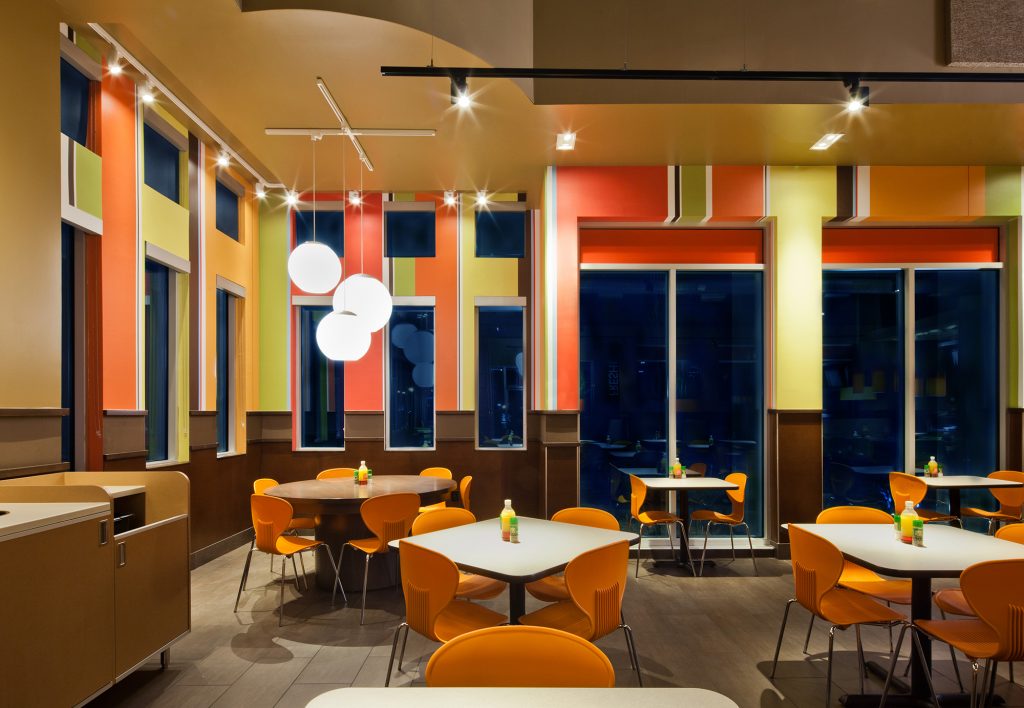New Lighting Lingo: Talking Points for Sales Reps

Without lighting where would architecture be?
More than any other architectural element, quality lighting transforms a room. It determines the atmosphere of a space and brings value to the function of architecture by creating an experience.
Walk into a warmly lit room and you’ll instantly feel relaxed and at ease. Walk into the same room buzzing with harsh overhead fluorescent lights and your mood will completely change.
Space is defined by light. Whether it’s daylighting or artificial lighting, light draws attention to textures, colors and forms of a space, helping architecture achieve its purpose. That is why it’s crucial to design the lighting around the intended purpose of the room. Design is inspired by light and light is inspired by design.
Architects want to know the ins and outs of lighting a room adequately and comfortably, so they can specify with confidence.
Architects know that temperature, intensity and the right blend of electrical and natural light need to harmoniously come together to create the desired atmosphere. Depending on their level of experience, architects may rely on your expertise to help them interpret how light will operate in certain environments
Position yourself as a resource for architects, who are eager to be well-educated about the product offerings and capabilities you can provide.
Here are talking points and resources to help you make the most of your next networking session.
Top talking points for your next architectural networking meeting
We all know that the right lighting can solve many problems. Here’s a few talking points for your next meeting with an architect.
1. Daylighting
Daylighting, the deliberate harvesting of sunlight paired with LED systems that dim or brighten based on the natural ambient light levels, is a key component of human-centric lighting. A daylighting structure consists of systems, technologies and architecture. When an LED solution is paired with sensors like photocells, occupancy sensors and automatic dimmers, the interior light can always be at a certain level. Add in LEDs’ tunability, and the interior lights can mimic the sun’s natural light and dark cycle.
The science of daylighting design is not just how to provide enough daylight to an occupied space, but how to do so without any undesirable side effects like problems regulating temperature or insufficient light (deep in the building). Avoiding glare is another obstacle that can be solved with window positioning and features outside the windows (like eaves, facades with fins or louvers and brises soleil).
For more on daylighting, read our blog: 6 solutions to common daylighting obstacles

2. Tunable lighting
Tunable lighting gives the option to adjust the light’s temperature to mimic the sun or to create a different mood in the space. It can be perfect for any architectural space and even offers added benefits like preventing health issues tied to disrupted circadian rhythms. The right lighting contributes to the mood and room design and can even improve productivity.
3. Human-centric lighting
At its most basic level, human-centric lighting is light that complements our natural circadian rhythms and mimics the sun. It pairs perfectly with daylighting for complete energy efficiency.
With human-centric lighting systems, electric light can be the solution to the problem it created—adjusting to our daily rhythms by automatically changing the intensity and color temperature throughout the day. This light tuning improves concentration and cognitive functions while enhancing health and well-being.
With the right controls, LEDs can easily change their CCTs and brightness during the day to match human circadian rhythms. The costs for LEDs and their controls keep dropping as the technology advances, making human-centric lighting systems more affordable than ever.
LEDs have several properties (e.g. durability, quality, lifespan, efficiency and cost-savings) that make them far superior to conventional light sources for human-centric lighting applications. LEDs pair well with modern controls, rendering them completely tunable and adjustable with infinite programming options.
Find out how to determine the type and amount of light a space needs:
- How Lighting Designers Avoid These 5 Common Pitfalls
- Avoiding the Top 3 Pitfalls in Human-Centric Lighting

Find beauty in precision with lighting
Light is more than light. It’s an investment and, like all investments, its impact is measurable. Coupled with architecture, the right lighting adds emotional value and supports a space’s function while improving energy efficiency. It is a powerful tool for creating rooms that are beautiful, efficient, healthy and productive.
Good lighting isn’t usually seen. It’s felt subconsciously. It is one of the most powerful influencers of behavior and emotional state. Treating it as anything other than an equal factor in the design process sets architecture up to fail.
Looking for more talking points for your next networking session? Review these blog posts:
· What Is the Right Light? A Primer for Architects
· 6 Solutions to Common Daylighting Obstacles
· Layering Light: 4 Real-World Examples for Architects
· 10 Ways Architects and Lighting Designers Can Bring Their Visions to Light

